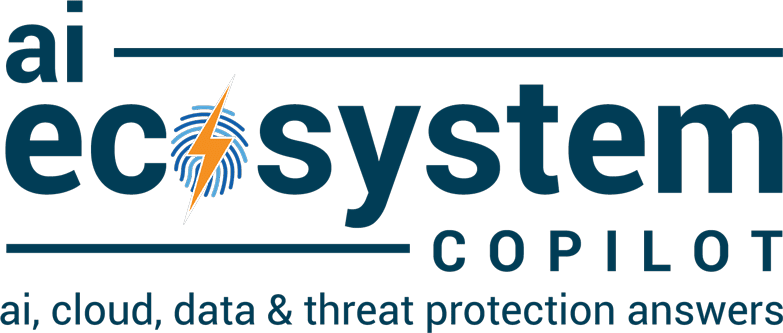Business AI Will Make Intelligent Enterprise a Reality in 2024

Having touted the significance of the Intelligent Enterprise for several years, SAP appears to be on the verge of delivering on that high-value promise in 2024 as its unique skills in enterprise apps, data, and industries become turbocharged with its new Business AI portfolio.
But business leaders will miss out on the full power and potential of these new artificial intelligence (AI) capabilities, SAP CEO Christian Klein recently told me, unless they remain fully committed to continuing and even accelerating their business-transformation initiatives regardless of economic uncertainty.
“When you look out there in the market, every industry needs to transform,” said Klein during an interview late last year at SAP’s Washington, D.C. headquarters as part of his recognition as the Cloud Wars CEO of the Year for 2023.
“This week here in the United States, I’m going to meet automotive companies who actually want to go into mobility as a service and figure out how they can become also more of a software-engineering-driven company, how can they also launch new business models with regard to the services they sell, and how they can drive the decarbonization of their supply chain.
“And that all comes back to SAP,” Klein said.
That confident claim was backed up by customer demand throughout 2023 as SAP’s cloud revenue grew about 24% for the year. Among the big accomplishments that are setting the company and its customers up for more success in 2024:
- the ongoing success of its RISE “business transformation as a service” program;
- the rapid uptake by customers of the Business Technology Platform, which unifies the application architecture across all of SAP and its ecosystem and greatly simplifies the work that IT and development organizations need to do;
- the launch of its Business AI portfolio and strategy;
- the launch of the Datasphere Data Cloud;
- the ongoing growth of Signavio as a process-modeling and optimization tool;
- the fusion of its CX business with its Industries business; and
- the soaring growth of its S/4HANA Cloud ERP solution, now in modular form and designed to meet the needs and requirements of customers, rather than requiring that customers change much of what they do to adapt to new software.
All of those achievements are, I believe, intended to align SAP’s extensive technology portfolio more tightly with customer requirements, to accelerate the pace of tech-based projects that drive business innovation, and fulfill the great promise of “the intelligent enterprise.”
During that interview late last year, I asked Klein to describe what customers are seeing as they peer into 2024.
“Without any doubt, Bob, you see out there that IT budgets are a bit under pressure,” he said. “So customers need a quick return on their investment but they also understand, ‘Hey, my business model transformation has to continue.’ And that means we at SAP need to work with them on further transforming.”
Klein cited sustainability as one of many potential disruptive priorities for customers “because there will be new regulations coming and new green taxes coming” — and in response, SAP has developed and released its Green Ledger solutions.
But perhaps the biggest new capability SAP can offer its customers in the coming year is its Business AI technology and solutions that Klein enthusiastically predicted “will indeed revolutionize how companies will run.” One example of that is how natural-language interface will dramatically alter how users engage with technology across all functional areas such as CRM, finance, procurement, sustainability, HR, and more.
“Now we will go on to build one foundational data model so that you can cross-correlate data and really run smart analytics so that you can solve some of your hardest business challenges.
“And that is game-changing next to the workflow automation, along with what we [recently] announced around automated code generation, which will make every developer an AI developer.”
And all that software innovation will reveal itself to customers as business innovation via the ability to make better and smarter decisions more quickly.

Ask AI Ecosystem Copilot about this analysis
“This week, I’ll be meeting with a big retailer, and as with many retailers, they have one big problem: with regard to their financials, the CEO and the CFO are under pressure because after COVID they had a lot of overcapacity and over-inventory and now the demand is even more volatile,” Klein said.
“And today, high inventory of course puts a lot of pressure on their balance sheet and on their P&L. Now, what can we do as SAP to help with generative AI? How can we help them be able to use 500 input parameters to better predict demand, which was also there with traditional AI? But now with generative AI, we can also help them simulate: ‘How can we get rid of the over-inventory by automatically adjusting the procurement, the production planning, and the resource scheduling? How can we actually also subsequently plan all the planning processes around total workforce? How can you connect our demand situation with better predictive capabilities on the front of it but then also connect it to all of the planning scenarios we have inside the company?’ “
Those are the types of challenges customers are addressing in 2024, Klein said, and those are the sorts of capabilities SAP is helping them create.
“They can now act in hours to change this inside the company to get rid of the over-inventory, and really steer the company as one, and these are the types of intelligence we can help them infuse.”
From the perspective of SAP CEO Christian Klein, it sounds like 2024 could well be the year that the truly intelligent enterprise becomes a reality.
Are you ready to unravel the secrets behind the success of the top players in the Cloud Wars Top 10 ranking? Take our exclusive Cloud Wars Top 10 course to elevate your understanding of the cloud ecosystem and gain valuable insights into the driving forces shaping the industry’s landscape



